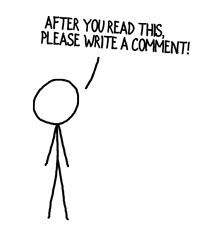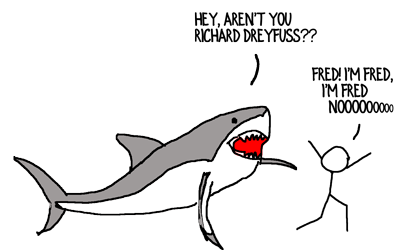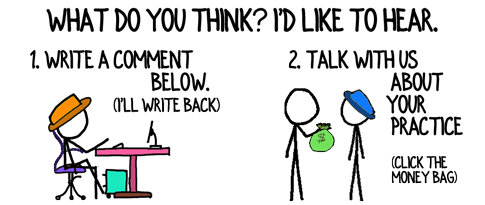In the late 1970s, total strangers would walk up to my father and say, “Hey, aren’t you Richard Dreyfuss from Jaws?” It was probably because my Dad looked like Richard Dreyfuss. After all, no one said that to my Mom. As far as I know. Anyway, as consultants wouldn’t it be great if more prospects would walk up to us out of the blue and exclaim, “Hey, aren’t you that guy who solves the problem I have?”
As your reputation and renown grow, that will happen more. But for now, it’s on you to actively expand your contact list. No doubt you’ve implemented plenty of marketing tactics, but marketing only increases your visibility; it doesn’t necessarily help you meet new clients. So, let’s create a list of ways to start new relationships.
10 Practical Ways to Meet New Consulting Clients
Ask for Introductions
This is the master strategy for meeting new prospects. An introduction from a current client to one of her colleagues or peers is consulting gold. You can ask for introductions from others too—anyone you interview or meet along the way. Prospects who turn you down for a project are a particularly good source of introductions.
Walk the Halls
Whenever you’re at a new client’s site, make it a practice to meet other executives in the building. There’s nothing like a face-to-face first impression, and since you just happen to be “just down the hall” from the CEO or EVP or some other good contact, why not pop your head in and introduce yourself.
Internal Meetings
Similar to walking the halls, use your project at a new client to meet with a wide range of contacts. I always interview an extremely broad range of stakeholders for any project. Kickoff meetings and report-outs are also good excuses to issue far-reaching invitations.
External Meetings
As long as you’re building off of an existing project, extend that leverage outside the organization too. Benchmarking the competition and collecting industry best practices are good reasons to meet new prospects while creating value for your client. (Note: never solicit new business while you’re talking to someone on behalf of an existing client.)
Article Research
One consultant I know in Toronto has used his weekly newspaper column as a platform for interviewing virtually every senior executive in his target market. Rare is the person who doesn’t want to be cited as an expert or highlighted as an exemplar of best practices.
Interactive Marketing
Your speaking, writing, and other marketing activities will produce more prospects if you build in a mechanism for connecting with your listeners and readers. For example, at the bottom of this article I’ll ask you to write a comment because: 1) you’re smart and when you comment I learn from you (and so do other readers); and 2) it’s a good way to start a relationship with you if we don’t have one already.
Online Vehicles
LinkedIn is explicitly marketed as a way to make valuable, new business contacts, so no one is surprised when you reach out to them and ask to connect. You’ll have to take it one (or two) steps further though to establish a real relationship. Other online vehicles include partners’ blogs, emails, podcasts, webinars and so forth. When your content is distributed to a partner’s list, you’re suddenly visible to a multitude of new prospects. Many of those prospects will jump onto your list… if you explicitly ask them to contact you.
Conferences
Like networking events on steroids. The crowd is bigger, most of the attendees are in a market you’re targeting and many are experiencing the problem you solve. (How convenient!) The little-known secret to establishing relationships through conferences is attending the same one multiple years in a row.
???
What other ways have you found effective to meet new, prospective clients?
I had a couple other approaches in my notes, but I want to hear yours. How else have you expanded your network and met high-potential prospects? Please add your thoughts and ideas below in the comments section.
Text and images are © 2024 David A. Fields, all rights reserved.

 David A. Fields Consulting Group
David A. Fields Consulting Group 




A friend told me that he establishes a code for himself about which pocket he uses to save a business card. I make notes o n them right after the event.
Good tips, Janet. Knowing which pocket holds which cards is important. I’ve been known to meet someone and hand them the card of the person I just met previously! Re writing notes on the cards: do you do that just to help embed the knowledge in your memory or is it meant to actually store the information? If the latter, do you leave your info on the cards or transfer it to some other system? I frequently get asked about these details and am curious as to how your system works.
David, thanks for another excellent post. I always enjoy and benefit from your insights. In addition to the ideas above, what are your thoughts on doing a podcast? That seems like a great way to expand your reach and increase your network of potential clients.
Simon, podcasts can absolutely be a great marketing vehicle. In order to meet people, though, the listener has to reach out to you. My suggestion #6 above applies to podcasts as well as other marketing vehicles. Thanks for bringing podcasts up since I didn’t call them out in the article.
The target audience for a podcast interview is the person you’re interviewing, with the overflow audience being the people they share your interview with in THEIR network that might have an interest in the topic you’re discussing. (Hope that isn’t too confusing)
Not confusing at all. What you’re saying fits precisely with #5 on the list above (article research). In this case your article is in podcast form, and the same dynamic applies. Thanks for reinforcing the thoughts on using podcasts.
When I get a business card for a lead (someone who made a point to come talk to me after a program) I fold it in half; when someone runs up to talk to me and is clearly excited about working with me, I fold their card in half twice to form an “X”. They are a targeted lead. I then transfer information to a spreadsheet I created that is a simple Lead Management System (a bare bones version of CRM software but specifically for leads).
Great system, Zach. I’m guessing you don’t fold the card in half while you’re still in front of the new contact–people are funny about how you treat their business cards. Your approach is very practical and I’m sure many readers will try it out. Thanks for sharing!
double fold is a brilliant idea! thank you for sharing.
I transfer all contacts into Outlook and those I intend to work on soon – into Pipedrive.com (thank you, David, for informing me about this service)
I have become very involved in my industry trade association and leveraged relationships in several ways: 1) volunteering on various committees; 2) become a SME and speaking at conferences; 3) starting my own small specialty networking groups both in a volunteer capacity and “offline”; and 4) building relationships with other consultants in my tribe and being intentional about referring them business. I believe in the “go-giver” philosophy and always try to add value to people by connecting them with others and sharing any pearls of wisdom l’ve gleaned along the way.
Shira, that’s a great addition to the discussion. Trade associations are one of my “5 Marketing Musts” for consultants. Participation in trade associations is beneficial for a whole host of reasons, and you’ve given a number of good suggestions on how to use them.
Thanks also for bringing up the “go giver” philosophy. I actually have an interview with Bob Burg (author of The Go Giver) I’ve been meaning to post. I’ll get that up here for everyone pronto. It’s good listening for the new year.
Hi David,
Great post once again. Allow me to offer a few comments on what you mentioned and then two other methods I use. First, at a new client, be sure the one who hired you is OK with you stepping into someone’s else’s office. Some organizations (e.g., military) have strict protocols about this. Second, I’ve keynoted and presented workshops at conferences for 30 years. Presenting a half-day and full day workshop heightens the chance you’ll get more work. Keynoting doesn’t always get this anymore cause there aren’t always a lot of buyers in audiences – it’s easier to get more speaking than consulting.If you do a local community serve event where you know you’ll be given a nominal honorarium (maybe $200 for a lunch), tell the organizer you want to donate it to a cause supported by the group. It’ll get people to talk to you.
Other ideas: When I’m asked to do a talk, I request interviews with at least five attendees to hone what I’ll say. A couple times a year, I get someone that asks how they can hire me. This may start out as coaching or speaking but often expands.
Second, for eight years, a colleague and I have had a mini-mastermind phone call each month. It started because he wanted to write a book and I’d written three at that time. One day he alerted me to a Gartner conference in Phoenix, saying someone had spoken on business storytelling to CIOs. Curious, I looked up the speaker and reached out to him. We’ve since had two calls and will meet next week Monday in NYC to sketch out an article (he’s a senior exec with the firm). I’ve no idea where it will lead but will undoubtedly open up new doors. My colleague has also found me keynote opportunities which I’ve parlayed into more work. And he’s since authored two books – the workshops he does as a result are now his sole income source – having more than doubled what he made before this time.
Third, whenever I’m consulting/speaking in a city, I reach out to others in the local area to have dinner. This is a long-term prospecting method because I focus solely on building relationships – no selling. My thank you is to send the person a copy of a book I’ve authored. You never know who else may see it – and I stay top of mind every time they look at it.
Wishing you a terrific New Year!
Lori
Wow, Lori! You’ve shared a ton of great ideas, including a number very clever ways to leverage speaking engagements beyond the gig itself. I love every single one of your suggestions. In fact, I think I’ll include them in some of my writing about how to leverage speeches. Thanks for the detailed contribution to the discussion. Happy New Year to you too!